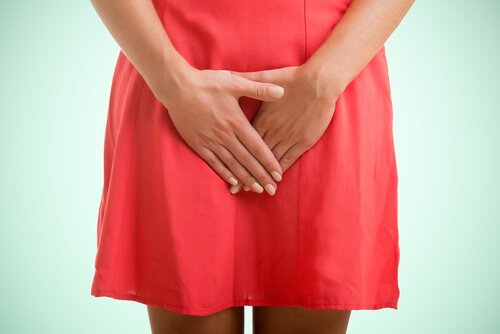What Is Functional Menometrorrhagia?

Functional menometrorrhagia is a disorder in the female body associated mainly with hormonal alterations. These can cause abundant vaginal bleeding accompanied by severe abdominal pain and weakness.
This condition is associated with hormonal problems in most cases that occur. However, it’s also linked to cases of drug poisoning, abortion, pregnant women with placenta praevia and many other conditions. Next, we’ll explain more details of this problem.
What Is Functional Menometrorrhagia?
There are two types of conditions called menometrorrhagia. One is called organic menometrorrhagia, and the second is called functional menometrorrhagia.
Organic menometrorrhagia is caused by genital infections, fibroids, inflammation of the cervix, tumors, endometriosis, vaginitis or polyps.
Functional menometrorrhagia, on the other hand, is more directly associated with hormonal problems. It can be due to abortions, alterations due to hormonal therapies with drugs, metabolic problems and placenta praevia.
It is a condition that affects women of childbearing age and it turns out to be quite common. It doesn’t represent a serious health risk, except in cases where bleeding is associated with cancerous tumors.
Symptoms of Functional Menometrorrhagia
The symptoms of functional menometrorrhagia are associated with severe abdominal pain and heavy bleeding that last seven or eight days. It’s estimated that the blood loss per day can be around 100 milliliters.
A woman who suffers from this condition will suffer from constant weakness, anemia and iron deficiency.

The bleeding caused by functional menometrorrhagia doesn’t necessarily coincide with the dates of menstruation.
It’s possible that this bleeding occurs on different days, either due to the advancement of the cycle induced by hormonal treatments or because bleeding isn’t a direct manifestation of menstruation.
Treatment for Functional Menometrorrhagia
There are several recommended treatments for functional menometrorrhagia, depending on the causes of the bleeding.
- Suspension of medications: The simplest and most immediate treatment is linked to bleeding from using medications for hormonal regulation. In these cases, simply stopping the medication should cause the bleeding to stop or the flow to be reduced considerably.
- Absolute rest: It will be recommended if the causes of the bleeding are linked to high risk pregnancies when the fetus is in danger of being aborted or if the mother suffers placenta praevia.
- Anovulatory: For very young women who have this condition, anovulatory, or the intake of 10 grams of progestogens, known as medroxyprogesterone acetate, will be recommended. They should consume these within the 15th to the 24th day of the cycle, for a period of four to five months.
“Functional menometrorrhagia is more directly associated with hormonal problems. It can be due to abortions, alterations due to hormonal therapies with drugs, metabolic problems and placenta praevia.”
Alternative Home Treatments
There are also alternative treatments for functional menometrorrhagia that can help to alleviate or get rid of the annoying symptoms.
It’s important to clarify that using these natural remedies by pregnant women can bring health problems to the baby if not approved by your doctor ahead of time.
- Tamarind juice with dehydrated plums: This drink was offered to women as a home remedy to reduce or stop menstrual bleeding. It’s rich in antioxidants and benefits cardiac functions.
- Radish juice: It’s known as a tuber that helps regulate hormonal disorders and also suppresses excessive bleeding. You can prepare this juice with water or you can eat the radish directly. Eat at least four units per day.

- Orange and lemon juice: This drink is one of the best to reduce vaginal bleeding. It also provides large doses of vitamin C and antioxidants.
- Eggplant and beet: The eggplant and beet drink is one of the most effective beverages to stop heavy bleeding. You should take at least 350 milliliters a day to get immediate effects.
As a final recommendation, the woman who is presenting symptoms of functional menometrorrhagia is advised to go to her gynecologist as soon as possible so that he or she can determine the specific cause of the hormonal alteration. Also, the doctor will indicate the most suitable treatment for your particular case.
All cited sources were thoroughly reviewed by our team to ensure their quality, reliability, currency, and validity. The bibliography of this article was considered reliable and of academic or scientific accuracy.